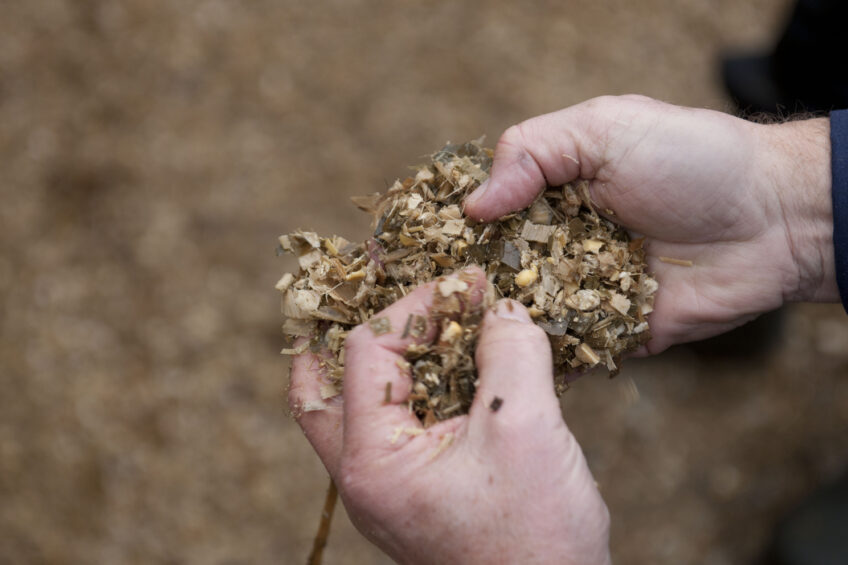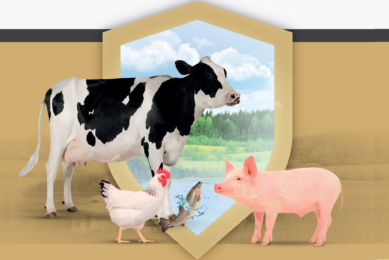Identify and fix your mycotoxin contaminated silage

Recent data indicates that corn (maize) silages may present a genuine mycotoxin risk to dairy cows. Given the uneven distribution of fungi and the mycotoxins they produce in a single lot, proper sampling is key to correctly assessing the specific on-farm mycotoxin threat.
The variety of ingredients in a ruminant diet, including cereals, protein feed, forages, legumes, sorghum etc., exposes dairy cows to a wide range of contaminants at different dosages and at different times. Mycotoxins–fungal metabolites toxic to animals and humans produced by common moulds found in almost all types of grains – can cause significant damage to animal health, performance and productivity. Furthermore, some mycotoxins can be carried over from ingested feed into animals’ milk, such as the case with aflatoxin.
The 2015 Biomin Mycotoxin Survey covers agricultural commodity samples from over 60 countries to identify the presence and potential risk posed to livestock animal production by mycotoxins worldwide. Corn silage samples were tested for aflatoxins (Afla), zearalenone (ZEN), deoxynivalenol (DON), T-2 toxin (T-2), fumonisins (FUM) and ochratoxin A (OTA). Figure 1 shows the prevalence of six major mycotoxins in corn silage. More than 40% of samples tested positive for DON at concentrations above the recommended threshold for cows. Nearly one out of four samples had ZEN ppb levels in excess of recommendations. Likewise, Afla exceeded the risk threshold 11% of the time. Table 1 provides further details on the number of samples, average and maximum concentration levels, and recommended maximum thresholds for dairy cows.
Consequences for cows
Aflatoxins, produced by Aspergillus, are commonly found at low dosage in forages such as maize silage and hay. It has been shown to carry-over into milk and pose a threat to humans upon ingestion — a key reason for regulatory maximum levels in milk in many jurisdictions. Aflatoxins are associated with impaired rumen function, impaired udder health, increased somatic cell count, decreased resistance to environmental and microbial stressors and increased susceptibility to diseases. Even low doses can have serious health implications in the long-term. Due to its estrogenic proprieties, zearalenone (ZEN) can impair reproduction and have nefarious effects on the reproductive cycle and estrogen hormone regulation in heifers and calves. In the rumen ZEN is converted into two forms: α- and β-zearalenol. The α-form is even more estrogenic, and hence potentially more disruptive to reproduction, than ZEN itself. Deoxynivalenol (DON) is the most common mycotoxin in forages, occurring worldwide sometimes at high concentrations. It is associated with impaired rumen function, diarrhoea, metabolic disorders, mastitis, metritis and lameness.
Invisible threat
Mycotoxins are too small to be visible to the naked eye, so mycotoxin contamination is not accurately detected by sight. The absence of visible mould in silage does not necessarily mean that it is free of mycotoxins. The converse also holds true: heavily infested, visibly mouldy silage does not necessarily contain severe levels of mycotoxins. The first step in protecting the herd is to correctly identify the specific mycotoxin challenge on the farm by way of regular testing of feedstuffs and feed prior to feeding.

Uneven distribution
Mycotoxins and the fungi that produce them are not distributed homogeneously within silage. Since feed is either stored in silos (bunker, trench, etc.), or bales of different shapes, most lots are mainly static and contaminants are not spread equally throughout the lot, but rather accumulate in certain niches, i.e. next to the walls where the humidity can favour fungal growth. The picture with the silage shows uneven mycotoxin distribution in storage silos (single corn silage lot). Type B trichothecenes include deoxynivalenol, 15-Acetyldeoxynivalenol (15ADON) and DON-3-glucoside (D3G), the latter a masked mycotoxin not easily detected by conventional methods often released in the rumen and able to harm animals. The variability between the minimum and maximum ppb levels of mycotoxins in silage can be considerable. As Figure 2 illustrates, the highest value for zearalenone in this case was 50% higher than the lowest detected value. For Type A trichothecenes (HT-2 toxin), there was a staggering 300% difference. Even the lowest variability, that of zearalenone and its metabolite zearalenone-14-sulfate, amounted to a 56% difference.
Tips for proper sampling
Mycotoxin detection relies on proper sampling to ensure reliable, accurate results that reflect the real mycotoxin challenge on the farm. Here are a few ways to ensure smooth sampling.

Variable mycotoxin occurrence in single corn silage lot (2015). A: Type A trichothecenes (HT-2 only), B: Type B trichothecenes (DON, 15ADON, D3G), F: Fumonisins (FB1, FB2, FB3, FB4) and Z: Zearalenone metabolites (ZEN, Z14S). Source: Biomin.
Follow a suitable sampling procedure e.g. EU guidelines Regulation (EC) No 401/2006 on “laying down the methods of sampling and analysis for the official control of the levels of mycotoxins in foodstuffs” which sets out the number of incremental samples needed depending on the lot type (solid feed or roughages) and lot size.
Use a probe that reaches every area of the lot rather than sampling from a single spot.
Carefully prep samples. Those sent to laboratories should be properly dried, vacuum-packed and refrigerated until shipping.
Properly label samples. Attach a label indicating the date of sampling, origin of the lot (country, region, farm name), year of production, size of the lot sampled, short description of sampling procedure, stage of sampling (storage, feed mill)
Avoid snail mail. Choose an express mail service and avoid shipping late in the week when packages may sit over the weekend.
From analysis to action
The mycotoxin analysis report based on submitted samples provides guidance on the specific mycotoxin challenge on the farm. An expert consultation using those results will help farmers in selecting the appropriate mycotoxin deactivator, since different feed additive components have specific modes of action that target the specific mycotoxins and can consequently be tailored to address the identified on-farm threat. It also helps to determine the right inclusion rate.
Multiple innovative strategies
Because groups of mycotoxins differ structurally from one another, several strategies are needed to counter the wide range of mycotoxins found on the field. The three strategies to counteract different mycotoxins are biotransformation, adsorption and bioprotection. Mycofix® contains the only EU authorised feed additives proven to adsorb harmful mycotoxins and to biotransform mycotoxins into nontoxic metabolites. It combines these three modes of action to deliver the most scientifically advanced protection against mycotoxins to date. With proper sampling procedure, sample preparation, regular monitoring and application of a mycotoxin deactivating feed additive, farmers can protect herds from the negative impacts of mycotoxins in order to support continued health and performance.
Join 13,000+ subscribers
Subscribe to our newsletter to stay updated about all the need-to-know content in the dairy sector, two times a week.










